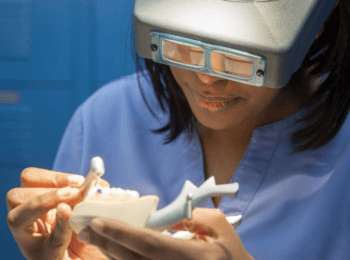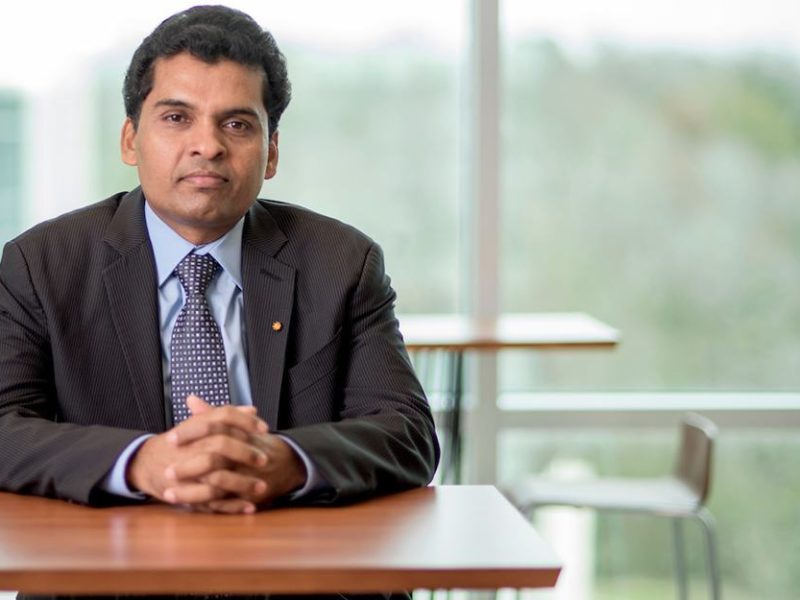The Next Generation Of Dental Implants

Dental implants, an increasingly popular treatment for people with tooth loss, are essentially replacement of the teeth’s roots. They are made mostly out of titanium and are designed to fuse with bone. The “teeth” that go on top of the implants can be just a crown, or one or more removable teeth, but many people choose a full set of fixed teeth that function and look very similar to natural ones—including needing to be flossed.
Elias Kontogiorgos, D.D.S., Ph.D., who completed a residency in graduate prosthodontics at the Texas A&M University Baylor College of Dentistry (TAMBCD) in 2008, has been a faculty member in the Department of Restorative Sciences at TAMBCD since 2010. As the director of implant dentistry at the college, he teaches both dental students and practicing dentists about implants. Although many of these people will not specialize in prosthodontics—which requires three years of additional training after completing a doctorate in dental surgery or dental medicine—they may still perform implant procedures. In fact, Kontogiorgos encourages general dentists to handle some of the more straightforward treatments, leaving the relatively few prosthodontists nationwide to treat the patients who have advanced and complex restorative needs. In this way, he hopes to help more people who could benefit from implants get them—as national statistics show that right now, up to 95 percent of those who are candidates do not end up receiving implants.
Implants have been around in the United States since the late 1980’s, but they’ve become more popular than dentures because they mimic the look and function and natural teeth much better. “They provide better stability for the prosthetic teeth,” Kontogiorgos said. “Having them improves quality of life, self esteem, and even nutrition.” Unlike with dentures that generally require a modified, soft-food diet, once patients have healed from the implant surgery, they can generally eat whatever they want, including things that are difficult to chew with dentures.
Like any minor oral surgery, getting implants involves some risk of pain, inflammation or infection. Kontogiorgos encourages people considering implants to discuss them with their dentist. “There are always risks involved; there is nothing without risk,” he said. Some people might be at a higher risk of complications; others might be excellent candidates. “Either way, patients should be aware.”
Continue reading on Vital Record.
This article by Christina Sumners originally appeared in Vital Record.





